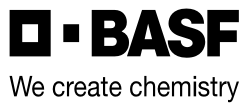Common Questions
What are the benefits of growing Clearfield® lentils?
The benefits of growing Clearfield® lentils include:
- Herbicide-tolerant lentil varieties available for all major market classes that provide strong agronomic traits and outstanding yields
- A range of crop-safe, broad-spectrum herbicides that can be selected for weed pressures specific to a grower's field
- BASF provides an expanded range of crop protection products for pre-seed burndown and protection against disease that are registered for Clearfield lentils
- Product performance guarantee and support through the Advanced Weed Control program from BASF
- Greater access to grower rewards
Do I need to sign a Clearfield® Commitment to grow Clearfield lentils?
BASF discontinued the use of the Clearfield Evergreen Commitment for lentils in the 2023 season. Growers are no longer required to sign a Commitment to grow Clearfield lentils or purchase Clearfield herbicides.
Can I save my Clearfield® lentil seed to plant next year?
Growers are allowed to save their harvested Clearfield lentil seed to be used for seeding in future years. Growers are asked to:
- Register their acres of Clearfield lentils each season
- Ensure that their saved seed has passed a Clearfield-Confirm® test to ensure that the seed meets the Clearfield trait tolerance standards
Where can I acquire Clearfield® lentil seed?
You can purchase Clearfield lentil seed from the following entities:
- Farm saved or pedigreed Clearfield lentil seed from an authorized seed seller
- Authorized Clearfield retailer
All Clearfield lentil seed purchased must meet the following criteria:
- Seed has passed the Clearfield-Confirm® test
Where can I register my Clearfield lentil acres?
There are three ways to register your Clearfield lentil acres:
- Authorized lentil retailer
- BASF Territory Manager
- Call AgSolutions Customer Care at 1-877-371-2273 (BASF)
What is the Clearfield-Confirm® test for lentils, where can I have it done, and how much does it cost?
To understand what the Clearfield-Confirm test for lentils is, where it can be done, how much it costs, and when you should do it, please see the information below:
- Every year, prior to growing your own farm-saved seed or selling it to others, you must first have it Clearfield-Confirm tested to ensure the seed meets the Clearfield® trait standards and has not been contaminated with non-Clearfield seed
- This test is paid for by BASF
- This can be done at one of the following certified testing labs: 20/20 Seed Labs Inc., SGS Canada Inc., Discovery Seed Labs, Lendon Seed Lab, Prairie Diagnostic Seed Lab, Seed Check Technologies Inc., Seed Solutions Seed Labs
- You can also take advantage of the Clearfield Seed Quality Offer to get one free pre-seed quality test (Limit of one pre-seed quality test per eligible farm)
Why is the Clearfield-Confirm® test for lentils so important and what happens if my seed does not pass?
The Clearfield-Confirm test for lentils is important, as it ensures the grower's seed meets the Clearfield® trait standards. It also determines whether there has been contamination with non-Clearfield lentil seed, which means a grower would have no guarantee of herbicide tolerance. Seed that does not pass the Clearfield-Confirm testing must not be planted as a Clearfield crop and should not have an IMI herbicide applied to it.
Do Clearfield® lentil herbicides cause delay in maturity (or associated risks)?
Clearfield lentil herbicides do not cause a delay in maturity and/or associated risks.
Are Clearfield® lentil varieties genetically modified organisms (GMO)?
Clearfield lentil varieties are not genetically modified organisms. All registered or soon-to-be registered Clearfield varieties were developed using traditional plant breeding methods. They are approved for export worldwide.
Do I have to buy my Clearfield® crop protection products from the Clearfield lentil retail?
You do not need to buy your Clearfield crop protection products from the Clearfield lentil retailer. However, these retailers are best equipped to advise you in optimizing crop protection of Clearfield lentils with products including herbicides and fungicides and can advise you on harvest management. Always read and follow label directions.
Can I apply Pursuit® herbicide in Clearfield® lentils?
Pursuit herbicide is not registered for use on Clearfield lentils. Registered BASF products include Solo® ADV, Solo Ultra Q, Odyssey® NXT and Odyssey Ultra Q herbicides. Always read and follow label directions.
What crops can I grow the year after using Solo® herbicides?
The following crops can be grown one year after using Solo herbicides: canary seed, canola, chickpeas, durum wheat, field corn, field peas, flax, lentils (incl. Clearfield® lentils,) soybeans, spring barley, spring wheat, sunflowers (incl. Clearfield sunflowers) and tame oats. The following can be grown 2 years after application: mustard (condiment type only). Always read and follow label directions. Additional recropping restrictions for drought conditions can be found on the label.
What crops can I grow the year after using Odyssey® herbicides?
The following crops can be grown one year after using Odyssey herbicides: chickpeas, Clearfield® canola, field corn, field peas, lentils (incl. Clearfield lentils,) barley, spring wheat and tame oats. The following crops can be grown two years after an Odyssey application: canary seed and durum wheat. Always read and follow label directions. Additional recropping restrictions for drought conditions can be found on the label.

